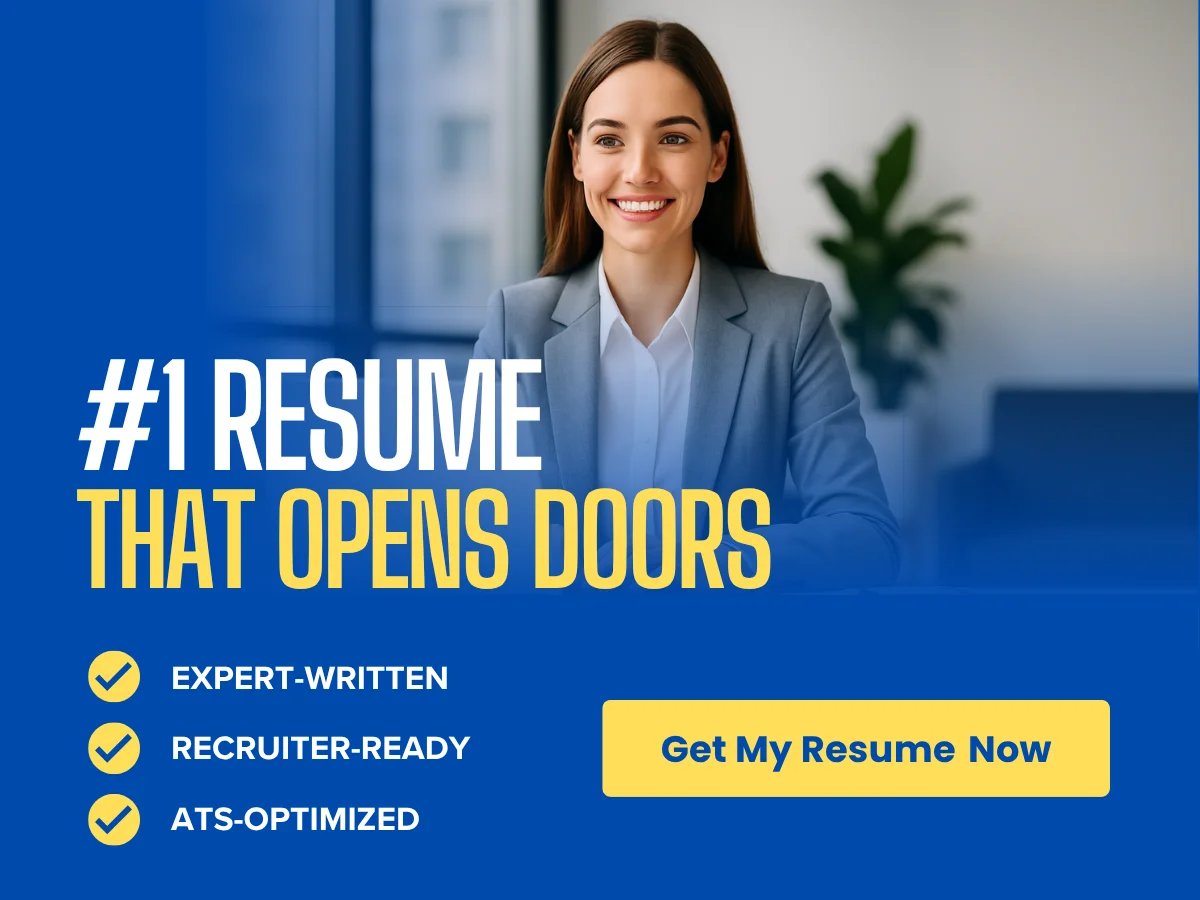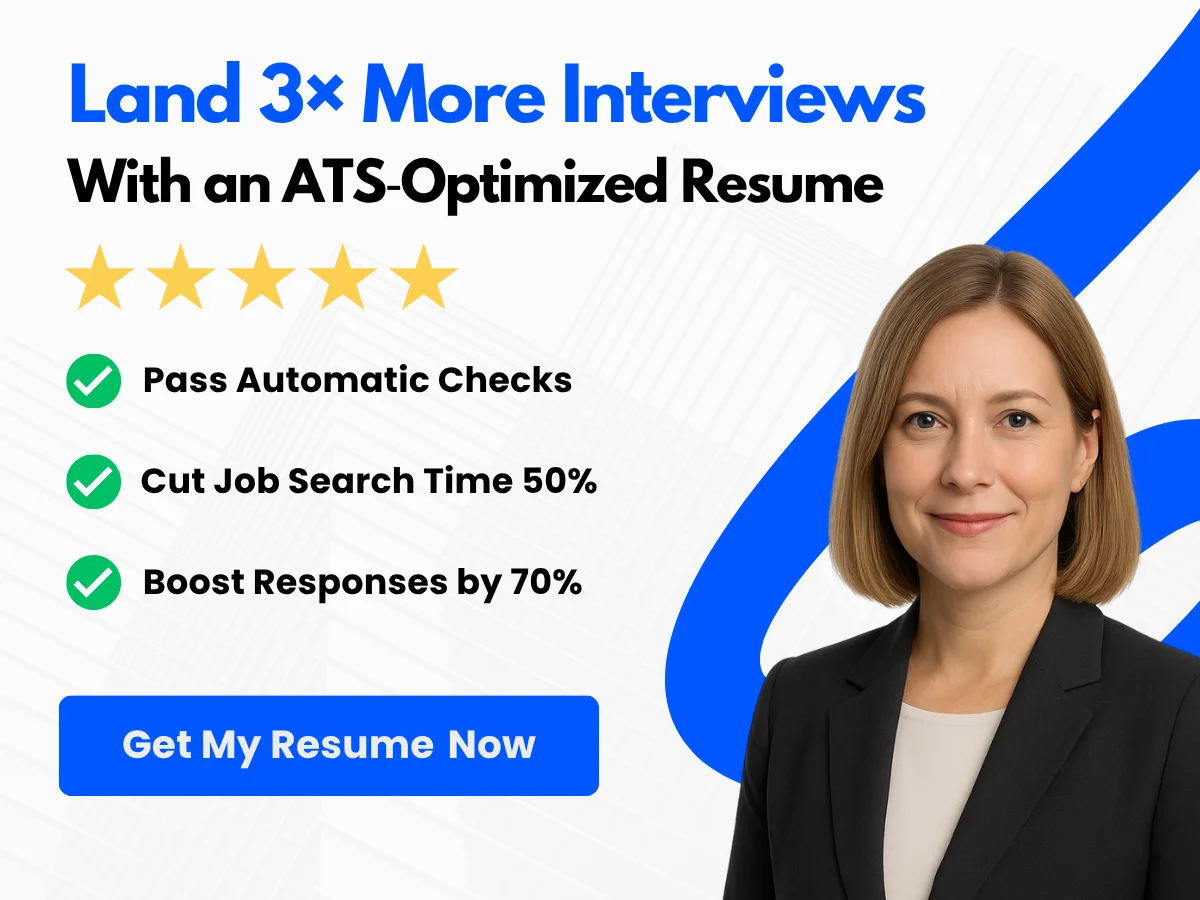In today’s fast-paced digital landscape, the role of a Full Stack Developer has emerged as one of the most sought-after positions in the tech industry. These versatile professionals possess a unique blend of skills that span both front-end and back-end development, enabling them to create seamless, user-friendly applications from start to finish. As businesses increasingly rely on technology to drive growth and innovation, the demand for skilled Full Stack Developers continues to rise, making it essential for aspiring candidates to stand out in a competitive job market.
Crafting a compelling resume is a critical step in this journey. A well-structured resume not only showcases your technical expertise but also highlights your problem-solving abilities and adaptability—qualities that are highly valued by employers. In this article, we will provide you with a comprehensive guide to creating an impactful Full Stack Developer resume, complete with 14 real-world examples and actionable tips to enhance your application.
Whether you are a seasoned developer looking to update your resume or a newcomer eager to break into the field, this guide will equip you with the insights and tools necessary to present your skills effectively. From formatting tips to key sections to include, you’ll learn how to craft a resume that captures attention and opens doors to exciting career opportunities.
Exploring the Role of a Full Stack Developer
Key Responsibilities
A Full Stack Developer is a versatile professional who possesses the skills to work on both the front-end and back-end of web applications. This dual capability allows them to manage the entire development process, from designing user interfaces to handling server-side logic. Below are the key responsibilities that define the role of a Full Stack Developer:
Front-End Development
Front-end development involves creating the visual elements of a web application that users interact with directly. Full Stack Developers use technologies such as HTML, CSS, and JavaScript to build responsive and engaging user interfaces. They are responsible for:

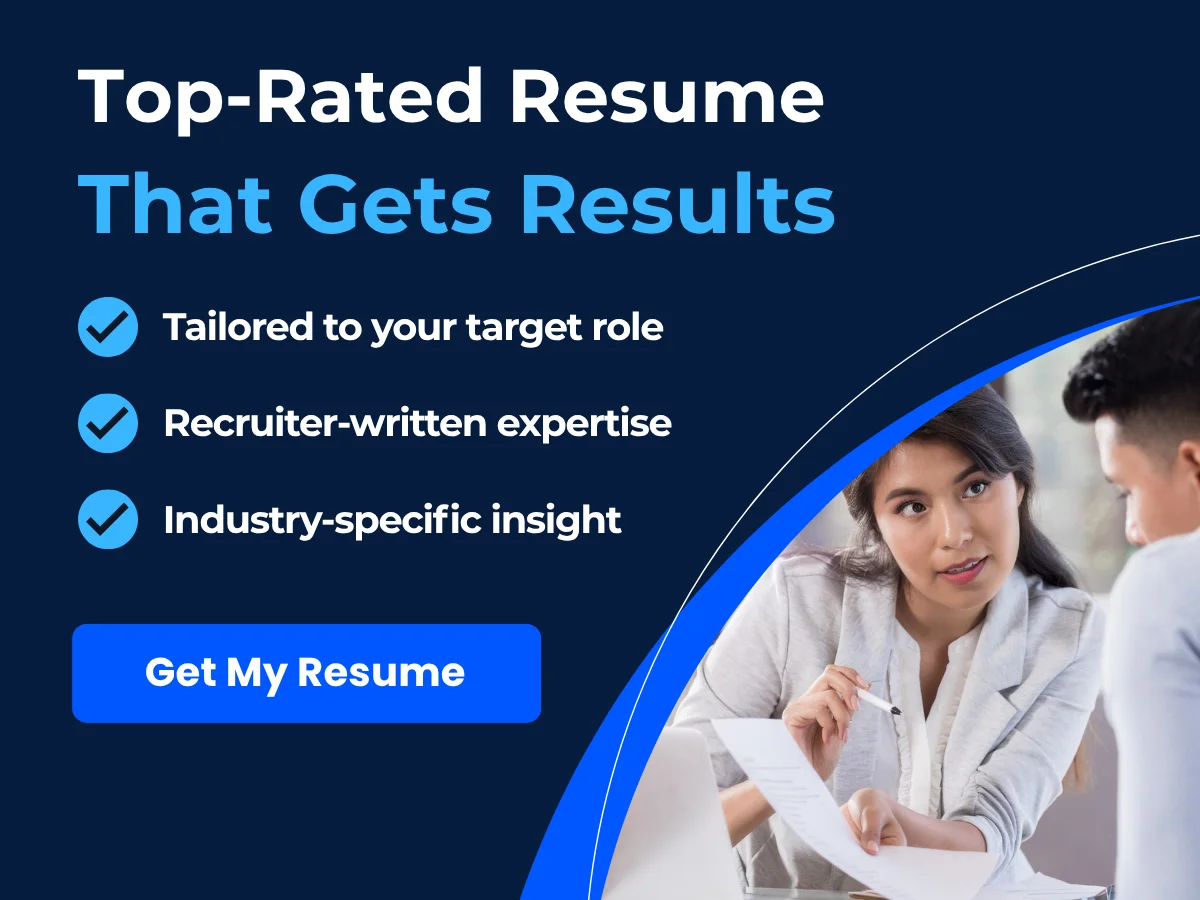
- Designing User Interfaces: Crafting layouts and designs that enhance user experience (UX) and user interface (UI) aesthetics.
- Responsive Design: Ensuring that applications function seamlessly across various devices and screen sizes using frameworks like Bootstrap or CSS Grid.
- Client-Side Scripting: Implementing dynamic features using JavaScript and libraries like React, Angular, or Vue.js to create interactive web applications.
Back-End Development
Back-end development focuses on the server-side of applications, where the business logic and database interactions occur. Full Stack Developers are proficient in server-side languages such as Node.js, Python, Ruby, or PHP. Their responsibilities include:
- Server Management: Setting up and maintaining servers, ensuring they run efficiently and securely.
- Business Logic Implementation: Writing code that defines how the application behaves and processes data.
- Integration with Front-End: Ensuring that the front-end and back-end communicate effectively, often through RESTful APIs or GraphQL.
Database Management
Databases are crucial for storing and retrieving data in web applications. Full Stack Developers must be adept at managing databases, which includes:
- Database Design: Structuring databases to optimize performance and ensure data integrity.
- SQL and NoSQL Databases: Working with relational databases like MySQL or PostgreSQL, as well as NoSQL databases like MongoDB or Firebase.
- Data Migration and Backup: Implementing strategies for data migration, backup, and recovery to prevent data loss.
API Integration
Application Programming Interfaces (APIs) are essential for enabling communication between different software components. Full Stack Developers are responsible for:
- Creating APIs: Developing RESTful or GraphQL APIs that allow front-end applications to interact with back-end services.
- Third-Party API Integration: Integrating external APIs to enhance application functionality, such as payment gateways, social media logins, or data services.
- API Documentation: Writing clear documentation for APIs to facilitate ease of use for other developers and teams.
DevOps and Continuous Integration/Continuous Deployment (CI/CD)
In today’s fast-paced development environment, Full Stack Developers often engage in DevOps practices to streamline the development process. Their responsibilities in this area include:
- Version Control: Using tools like Git to manage code changes and collaborate with other developers.
- Continuous Integration: Implementing CI tools to automate testing and integration of code changes, ensuring that new code does not break existing functionality.
- Continuous Deployment: Automating the deployment process to deliver updates to production environments quickly and reliably.
Essential Skills
To excel as a Full Stack Developer, a combination of technical and soft skills is essential. Below are the key skills that aspiring Full Stack Developers should focus on:
Technical Skills
Technical skills are the foundation of a Full Stack Developer’s expertise. These include:

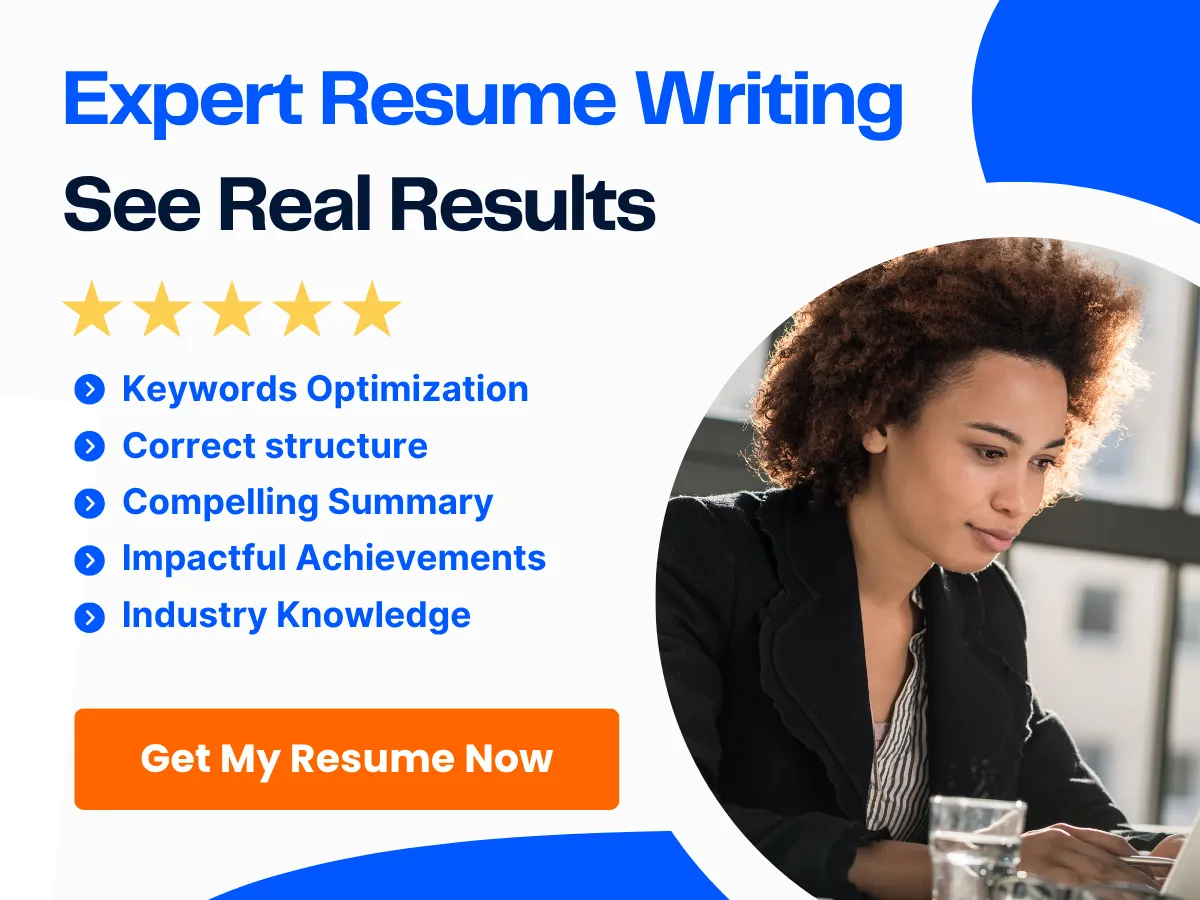
- Proficiency in Programming Languages: Mastery of languages such as JavaScript, Python, Ruby, or PHP is crucial for both front-end and back-end development.
- Frameworks and Libraries: Familiarity with frameworks like React, Angular, or Vue.js for front-end development, and Express.js, Django, or Ruby on Rails for back-end development.
- Database Management: Knowledge of SQL and NoSQL databases, including how to design, query, and manage them effectively.
- Version Control Systems: Proficiency in Git for tracking changes and collaborating with other developers.
- Understanding of Web Architecture: A solid grasp of how web applications are structured, including client-server architecture, HTTP protocols, and RESTful services.
Soft Skills
In addition to technical skills, soft skills play a vital role in a Full Stack Developer’s success. These include:
- Problem-Solving: The ability to analyze complex problems and devise effective solutions is essential in development.
- Communication: Clear communication with team members, stakeholders, and clients is crucial for understanding requirements and delivering results.
- Time Management: Balancing multiple tasks and projects while meeting deadlines is a key skill for developers.
- Adaptability: The tech landscape is constantly evolving, and being open to learning new technologies and methodologies is vital.
Industry Demand and Job Market Trends
The demand for Full Stack Developers has surged in recent years, driven by the increasing reliance on web applications across various industries. Here are some insights into the current job market trends:
- High Demand: Companies are seeking Full Stack Developers who can handle multiple aspects of development, making them highly sought after in the job market.
- Remote Work Opportunities: The rise of remote work has expanded job opportunities for Full Stack Developers, allowing them to work for companies worldwide.
- Competitive Salaries: Due to their versatile skill set, Full Stack Developers often command higher salaries compared to specialists in either front-end or back-end development.
- Continuous Learning: The fast-paced nature of technology means that Full Stack Developers must engage in continuous learning to stay relevant, often through online courses, workshops, and community involvement.
The role of a Full Stack Developer encompasses a wide range of responsibilities, requiring a diverse skill set that includes both technical and soft skills. As the industry continues to evolve, the demand for these professionals is expected to grow, making it an exciting and rewarding career path.
Crafting the Perfect Full Stack Developer Resume
Resume Structure and Format
When it comes to crafting a resume for a Full Stack Developer position, the structure and format are crucial. A well-organized resume not only makes it easier for hiring managers to read but also highlights your skills and experiences effectively. There are three primary formats to consider: chronological, functional, and hybrid.
Chronological vs. Functional vs. Hybrid
The chronological format is the most common and is ideal for candidates with a solid work history. It lists your work experience in reverse chronological order, starting with your most recent job. This format allows employers to see your career progression and the relevance of your experience to the position you are applying for.

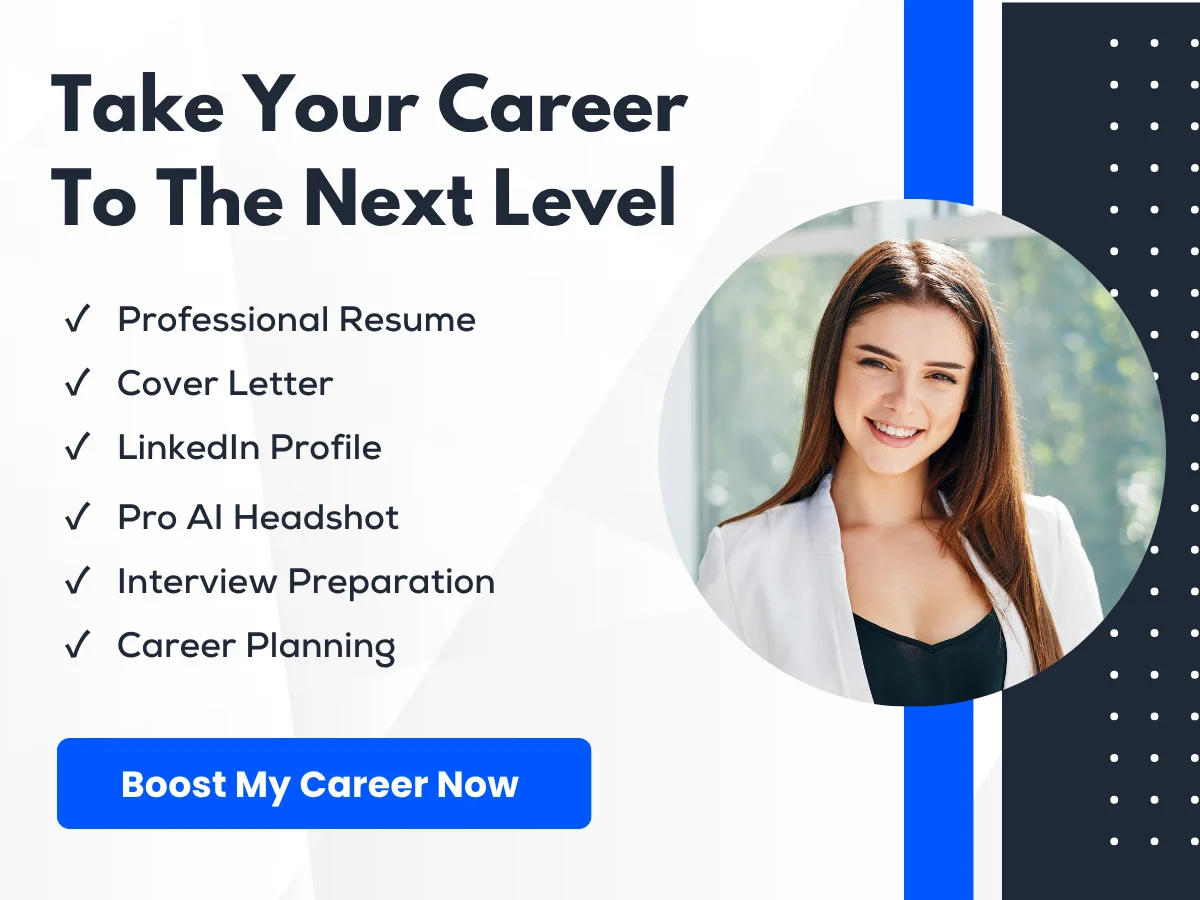
The functional format, on the other hand, focuses on skills and experience rather than work history. This format is beneficial for those who may have gaps in their employment or are changing careers. It emphasizes what you can do rather than where you have worked.
The hybrid format combines elements of both chronological and functional formats. It allows you to showcase your skills at the top while still providing a chronological work history. This format is particularly effective for Full Stack Developers, as it highlights both technical skills and relevant experience.
Length and Layout
In terms of length, a Full Stack Developer resume should ideally be one page, especially for those with less than 10 years of experience. However, if you have extensive experience or a diverse skill set, a two-page resume may be acceptable. The layout should be clean and professional, using clear headings, bullet points, and consistent font styles. Ensure there is enough white space to make the document easy to read.
Contact Information
What to Include
Your contact information is the first thing potential employers will see, so it’s essential to present it clearly. Include your full name, phone number, email address, and LinkedIn profile. If you have a personal website or portfolio showcasing your work, include that as well. Here’s an example:
John Doe (123) 456-7890 [email protected] linkedin.com/in/johndoe johndoeportfolio.com
Common Mistakes to Avoid
One common mistake is using an unprofessional email address. Always use a variation of your name. Additionally, avoid including unnecessary personal information such as your home address, marital status, or age, as these details are not relevant to your qualifications.
Professional Summary
Crafting a Compelling Summary
Your professional summary is a brief statement that summarizes your skills, experience, and career goals. It should be tailored to the specific job you are applying for and highlight your most relevant qualifications. A strong summary can grab the attention of hiring managers and encourage them to read further.
For example:


“Detail-oriented Full Stack Developer with 5+ years of experience in building scalable web applications. Proficient in JavaScript, React, Node.js, and Python. Passionate about creating user-friendly interfaces and optimizing performance. Seeking to leverage expertise in a dynamic team at XYZ Company.”
Examples and Templates
Here are a few templates to help you craft your professional summary:
- Template 1: “Results-driven Full Stack Developer with expertise in [specific technologies]. Proven track record of [specific achievements]. Looking to contribute to [company name] as a [position].”
- Template 2: “Innovative Full Stack Developer skilled in [specific skills]. Experienced in [specific industries or projects]. Eager to bring [specific qualities] to [company name].”
Technical Skills Section
How to List Your Skills
The technical skills section is critical for a Full Stack Developer resume. This section should be concise and focused on the technologies and tools you are proficient in. Use bullet points to list your skills, and consider categorizing them into front-end, back-end, and database technologies for clarity.
Technical Skills: - Front-end: HTML, CSS, JavaScript, React, Angular - Back-end: Node.js, Express, Python, Ruby on Rails - Databases: MySQL, MongoDB, PostgreSQL - Tools: Git, Docker, Jenkins
Prioritizing Relevant Technologies
When listing your skills, prioritize those that are most relevant to the job description. If the job requires specific technologies, ensure those are prominently featured in your skills section. This not only demonstrates your fit for the role but also helps your resume pass through Applicant Tracking Systems (ATS).
Work Experience
Detailing Your Professional Journey
Your work experience section should provide a clear picture of your professional journey. Start with your most recent job and work backward. For each position, include your job title, the company name, location, and dates of employment. Use bullet points to describe your responsibilities and achievements.
Work Experience: Full Stack Developer ABC Tech Solutions, New York, NY June 2020 - Present - Developed and maintained web applications using React and Node.js, improving load times by 30%. - Collaborated with cross-functional teams to design and implement new features based on user feedback. - Led a team of 3 developers in a project that increased customer engagement by 25%. Junior Full Stack Developer XYZ Innovations, San Francisco, CA January 2018 - May 2020 - Assisted in the development of a customer management system using Angular and Express. - Conducted code reviews and provided mentorship to interns, fostering a collaborative team environment.
Quantifying Achievements
Whenever possible, quantify your achievements. Use numbers, percentages, and specific outcomes to demonstrate the impact of your work. For example, instead of saying “improved application performance,” say “improved application performance by 40%, resulting in a 15% increase in user retention.” This approach provides concrete evidence of your contributions.
Action Verbs and Impact Statements
Start each bullet point with strong action verbs to convey your contributions effectively. Words like “developed,” “implemented,” “led,” and “optimized” create a sense of action and impact. Additionally, focus on impact statements that highlight how your work benefited the company or project.

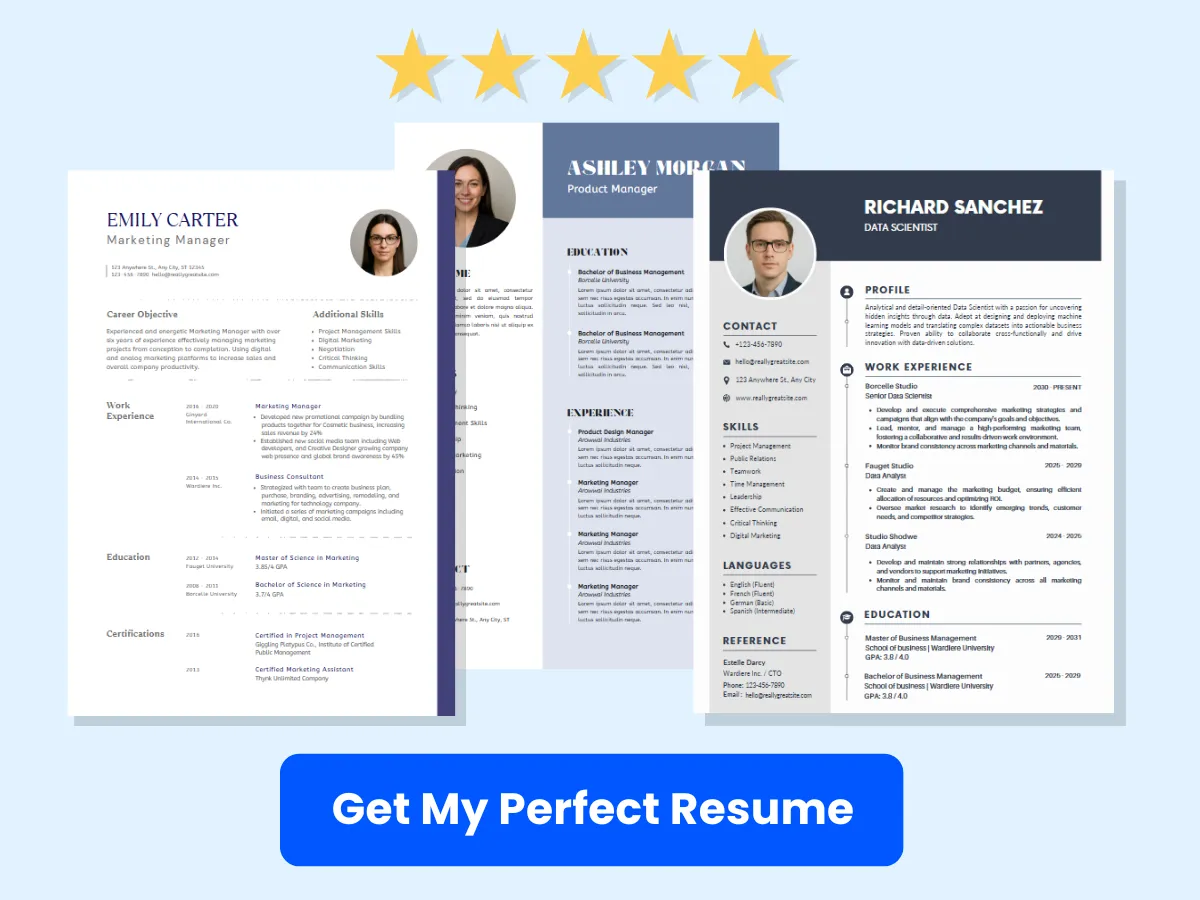
Education
Relevant Degrees and Certifications
In the education section, list your degrees and any relevant certifications. Include the name of the institution, degree obtained, and graduation date. If you have completed any specialized training or certifications in technologies relevant to Full Stack Development, such as AWS Certified Developer or Microsoft Certified: Azure Developer Associate, be sure to include those as well.
Education: Bachelor of Science in Computer Science University of California, Berkeley Graduated: May 2017 Certifications: - AWS Certified Developer – Associate - Microsoft Certified: Azure Developer Associate
Highlighting Continuing Education
As technology is constantly evolving, showcasing your commitment to continuous learning can set you apart from other candidates. Include any online courses, workshops, or boot camps you have attended that are relevant to Full Stack Development. This demonstrates your dedication to staying current in the field.
Projects and Portfolio
Showcasing Your Work
As a Full Stack Developer, your projects can speak volumes about your skills and capabilities. Include a section dedicated to showcasing your most significant projects. For each project, provide a brief description, the technologies used, and your specific contributions. This not only highlights your technical skills but also your ability to work on real-world applications.
Projects: Personal Portfolio Website - Developed a responsive portfolio website using HTML, CSS, and JavaScript to showcase my work and skills. - Implemented a blog section using a headless CMS, allowing for easy content management. E-commerce Application - Built a full-stack e-commerce application using React, Node.js, and MongoDB. - Integrated payment processing and user authentication features, enhancing user experience.
Linking to Online Portfolios
In addition to listing projects on your resume, consider creating an online portfolio where potential employers can view your work in detail. Include a link to this portfolio in your contact information. Platforms like GitHub, CodePen, or your own website are excellent places to showcase your projects and code samples.
Additional Sections
Certifications and Courses
In addition to your education, consider adding a section for certifications and courses. This can include any relevant online courses from platforms like Coursera, Udacity, or edX. Highlighting these can demonstrate your commitment to professional development and your expertise in specific technologies.
Awards and Honors
If you have received any awards or honors related to your work or education, include them in a separate section. This could include hackathon wins, academic honors, or recognition from previous employers. Such accolades can help differentiate you from other candidates.

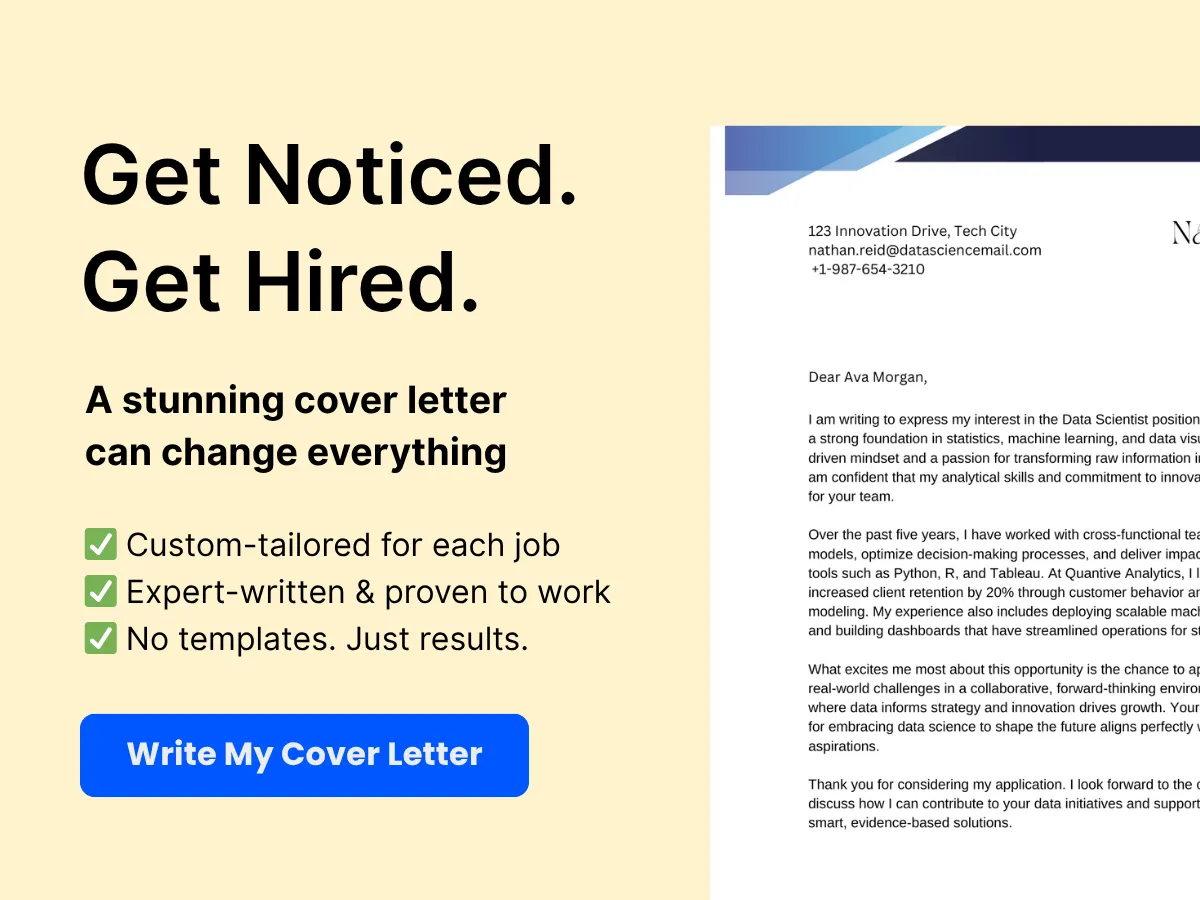
Volunteer Experience
Including volunteer experience can showcase your commitment to the community and your ability to work in diverse environments. If you have contributed to open-source projects or volunteered your skills for non-profit organizations, be sure to include this information. It reflects positively on your character and work ethic.
Languages
If you are proficient in multiple languages, consider adding a languages section. This can be particularly beneficial if you are applying to companies with a global presence or those that value diversity. List the languages you speak and your proficiency level (e.g., fluent, conversational, basic).
By carefully crafting each section of your Full Stack Developer resume, you can create a compelling document that effectively showcases your skills, experience, and potential to prospective employers.
Tailoring Your Resume for Specific Job Applications
In the competitive field of full stack development, having a generic resume simply won’t cut it. Employers are looking for candidates who not only possess the necessary technical skills but also demonstrate a clear understanding of the specific requirements of the job they are applying for. Tailoring your resume for each job application is essential to stand out from the crowd. This section will guide you through the process of customizing your resume effectively, focusing on exploring job descriptions, identifying keywords, and aligning your resume with job requirements.
Exploring Job Descriptions
Job descriptions are your roadmap to understanding what employers are looking for in a candidate. By carefully analyzing these descriptions, you can gain insights into the skills, experiences, and qualifications that are most important for the role.
Identifying Keywords
Keywords are specific terms or phrases that are frequently mentioned in job descriptions. They often relate to required skills, technologies, and qualifications. Here’s how to identify and utilize them:

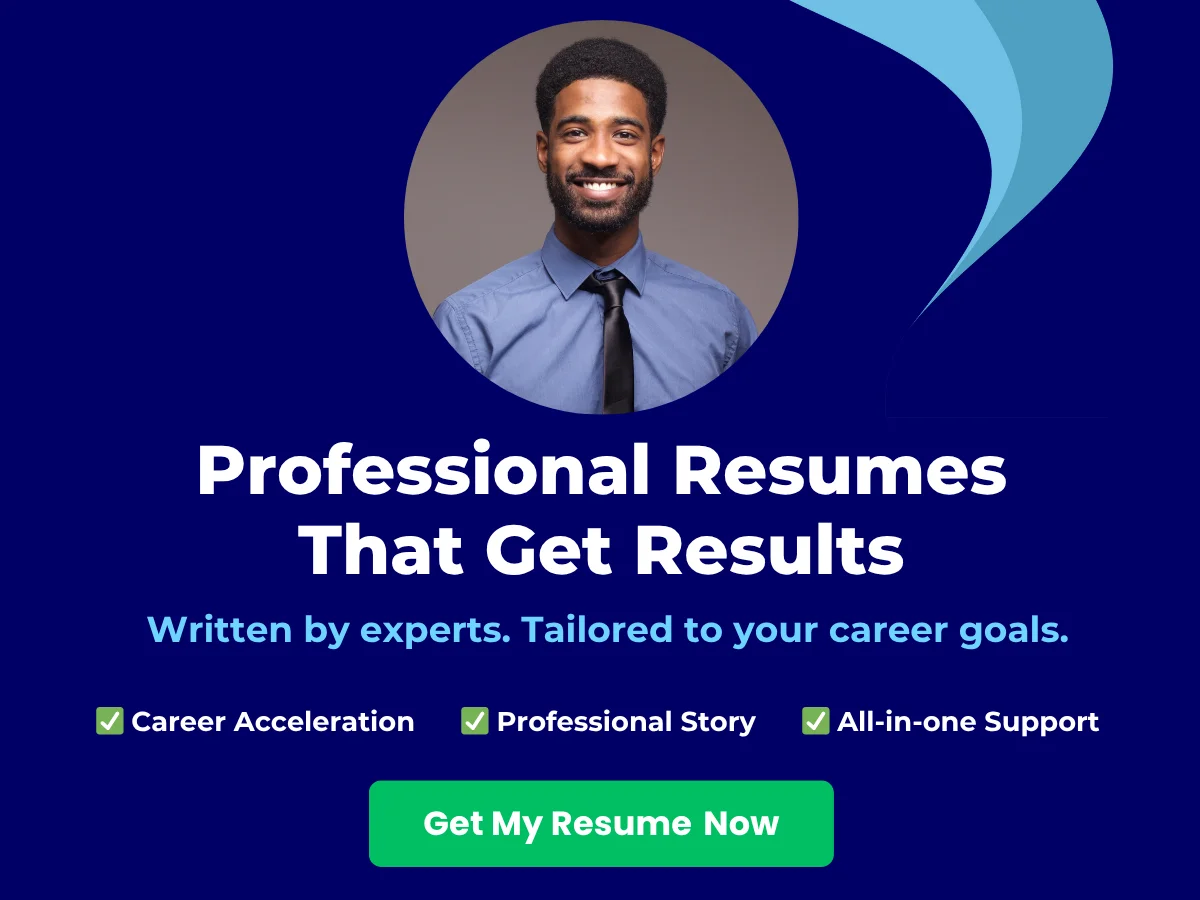
- Read Thoroughly: Start by reading the job description in its entirety. Pay attention to the responsibilities and qualifications sections, as these often contain the most relevant keywords.
- Highlight Repeated Terms: If certain skills or technologies are mentioned multiple times, they are likely crucial to the role. For example, if a job description mentions “JavaScript” and “React” several times, these are keywords you should incorporate into your resume.
- Use Job Titles and Certifications: If the job description specifies certain job titles or certifications, make sure to include these in your resume if applicable. For instance, if the position is for a “Senior Full Stack Developer” and you have held that title, it should be prominently featured.
By identifying and incorporating these keywords into your resume, you increase the chances of passing through Applicant Tracking Systems (ATS) that many companies use to filter candidates.
Aligning Your Resume with Job Requirements
Once you have identified the keywords, the next step is to align your resume with the job requirements. This involves tailoring your content to reflect the specific skills and experiences that the employer is seeking.
- Match Your Skills: Create a skills section that highlights the technologies and tools mentioned in the job description. For example, if the job requires proficiency in “Node.js” and “MongoDB,” ensure these are listed in your skills section, provided you have experience with them.
- Showcase Relevant Experience: When detailing your work experience, focus on projects and roles that are most relevant to the job you are applying for. Use bullet points to describe your responsibilities and achievements, and make sure to incorporate the identified keywords. For instance, if you worked on a project using “React” to build a user interface, mention it explicitly.
- Quantify Your Achievements: Whenever possible, use numbers to quantify your achievements. For example, “Developed a web application that increased user engagement by 30%” is more impactful than simply stating “Developed a web application.”
Customizing Your Resume
Customizing your resume goes beyond just tweaking a few words; it involves a comprehensive approach to presenting your professional narrative in a way that resonates with the specific job you are targeting.
Adapting Your Professional Summary
Your professional summary is the first thing potential employers will read, making it a critical component of your resume. This section should be tailored to reflect the specific role you are applying for.
- Highlight Relevant Experience: Start your summary by mentioning your years of experience in full stack development and any specific technologies that are relevant to the job. For example, “Results-driven Full Stack Developer with over 5 years of experience in building scalable web applications using JavaScript, React, and Node.js.”
- Showcase Your Value: Use this section to convey what you can bring to the company. For instance, “Proven track record of delivering high-quality software solutions that enhance user experience and drive business growth.”
- Incorporate Keywords: Make sure to include the keywords you identified from the job description. This not only helps with ATS but also shows the employer that you have the specific skills they are looking for.
Highlighting Relevant Experience and Skills
In the experience section of your resume, it’s essential to highlight the roles and projects that are most relevant to the job you are applying for. Here’s how to do it effectively:
- Prioritize Relevant Roles: If you have held multiple positions, prioritize those that align closely with the job description. For example, if the job emphasizes front-end development, highlight your experience in that area first.
- Use Action Verbs: Start each bullet point with strong action verbs to convey your contributions effectively. Words like “Developed,” “Implemented,” “Designed,” and “Optimized” can make your achievements stand out.
- Include Technical Skills: In addition to your work experience, create a dedicated section for technical skills. List programming languages, frameworks, and tools that are relevant to the job. For instance, if the job requires knowledge of “Docker” and “AWS,” make sure these are included if you have experience with them.
By customizing your resume to align with the specific job application, you not only enhance your chances of getting noticed by hiring managers but also demonstrate your genuine interest in the position. Remember, a tailored resume is a powerful tool that can significantly increase your chances of landing an interview in the competitive field of full stack development.
Common Mistakes to Avoid
Crafting a standout resume as a full stack developer is crucial in a competitive job market. However, many candidates make common mistakes that can hinder their chances of landing an interview. Below, we explore these pitfalls in detail, providing insights and tips on how to avoid them.
Overloading with Technical Jargon
While it’s essential to showcase your technical skills, overloading your resume with jargon can alienate hiring managers who may not be familiar with every term. Remember, your resume may first be reviewed by a recruiter or HR professional who may not have a technical background.
Tip: Use clear and concise language. Instead of saying, “Implemented a microservices architecture using Docker and Kubernetes,” you might say, “Developed a scalable application using containerization technologies.” This way, you still convey your technical expertise without overwhelming the reader.
Additionally, consider the audience. If you’re applying to a tech company known for its technical depth, you can afford to use more jargon. However, for companies that may not be as tech-focused, simplify your language.
Neglecting Soft Skills
Full stack development is not just about coding; it also involves collaboration, problem-solving, and communication. Many candidates focus solely on their technical skills, neglecting to highlight their soft skills, which are equally important in a team-oriented environment.
Tip: Integrate soft skills into your experience descriptions. For example, instead of just listing your technical achievements, you could say, “Collaborated with cross-functional teams to design and implement user-friendly interfaces, enhancing user experience and increasing customer satisfaction by 20%.” This not only showcases your technical ability but also your capacity to work well with others.
Consider including a dedicated section for soft skills or weaving them into your work experience. Skills such as teamwork, adaptability, and communication can set you apart from other candidates.
Inconsistent Formatting
Inconsistency in formatting can make your resume look unprofessional and difficult to read. This includes variations in font sizes, styles, bullet points, and spacing. A well-structured resume is easier to navigate and leaves a positive impression on hiring managers.
Tip: Choose a clean, professional format and stick to it throughout your resume. Use the same font type and size for all headings and body text. Ensure that bullet points are uniform, and maintain consistent spacing between sections. Tools like Google Docs or Microsoft Word offer templates that can help you maintain consistency.
Additionally, consider using headings and subheadings to organize your information clearly. This not only improves readability but also allows hiring managers to quickly find the information they need.
Typos and Grammatical Errors
Typos and grammatical errors can undermine your professionalism and attention to detail. A resume riddled with mistakes can lead hiring managers to question your competency as a developer, as coding also requires precision and accuracy.
Tip: Always proofread your resume multiple times. Consider using tools like Grammarly or Hemingway to catch errors you might overlook. Additionally, ask a friend or colleague to review your resume. A fresh set of eyes can often catch mistakes that you may have missed.
When proofreading, pay attention to common pitfalls such as incorrect verb tenses, subject-verb agreement, and punctuation errors. Ensure that your contact information is accurate and up-to-date, as this is crucial for potential employers to reach you.
Using Generic Templates
While templates can provide a good starting point, relying on generic templates can make your resume blend in with countless others. Hiring managers often see the same formats repeatedly, which can diminish your chances of standing out.
Tip: Customize your resume to reflect your unique skills and experiences. Tailor your resume for each job application by emphasizing the skills and experiences that are most relevant to the position. For instance, if a job description highlights the need for experience with React, ensure that your experience with React is prominently featured.
Additionally, consider adding personal touches to your resume. This could include a brief summary that reflects your personality and career goals or a unique design that aligns with your personal brand. However, ensure that any design elements do not compromise the readability of your resume.
Final Thoughts
Avoiding these common mistakes can significantly enhance your full stack developer resume. By focusing on clear communication, showcasing both technical and soft skills, maintaining consistent formatting, eliminating errors, and customizing your resume, you can create a compelling document that captures the attention of hiring managers.
Remember, your resume is often your first impression in the job market. Take the time to refine it, and you’ll increase your chances of landing that coveted interview.
Full Stack Developer Resume Examples
Entry-Level Full Stack Developer Resume
Example 1: Recent Graduate
As a recent graduate, your resume should highlight your educational background, relevant coursework, internships, and any projects that demonstrate your skills. Here’s a sample layout:
John Doe 123 Main St, Anytown, USA | (123) 456-7890 | [email protected] | LinkedIn: linkedin.com/in/johndoe Objective Motivated Computer Science graduate with a passion for web development and a solid foundation in both front-end and back-end technologies. Seeking an entry-level full stack developer position to leverage my skills in JavaScript, React, and Node.js. Education Bachelor of Science in Computer Science University of Anytown, Anytown, USA Graduated: May 2023 Technical Skills - Languages: JavaScript, HTML, CSS, Python - Frameworks: React, Node.js, Express - Databases: MongoDB, MySQL - Tools: Git, Docker, Visual Studio Code Projects - Portfolio Website: Developed a personal portfolio using React and CSS, showcasing projects and skills. - Task Manager App: Created a full-stack task management application using Node.js and MongoDB, implementing user authentication and CRUD operations. Experience Intern, Web Development Intern Tech Solutions, Anytown, USA June 2022 - August 2022 - Assisted in developing a client-facing web application using React and Node.js. - Collaborated with a team of developers to troubleshoot and optimize existing code. Certifications - Full Stack Web Development Certification, Codecademy
Example 2: Career Changer
If you are transitioning from a different field, your resume should emphasize transferable skills and relevant experiences. Here’s a sample layout:
Jane Smith 456 Elm St, Othertown, USA | (987) 654-3210 | [email protected] | LinkedIn: linkedin.com/in/janesmith Objective Detail-oriented professional with 5 years of experience in project management and a recent certification in full stack development. Eager to apply my analytical skills and technical knowledge in a full stack developer role. Education Full Stack Development Bootcamp Code Academy, Othertown, USA Completed: August 2023 Technical Skills - Languages: JavaScript, HTML, CSS, Ruby - Frameworks: Angular, Ruby on Rails - Databases: PostgreSQL, SQLite - Tools: Git, Heroku, Postman Projects - Budget Tracker: Developed a web application to help users manage their finances using Angular and Ruby on Rails. - Event Planner: Created a full-stack event planning tool that allows users to create, manage, and RSVP to events. Experience Project Manager XYZ Corporation, Othertown, USA January 2018 - July 2023 - Managed cross-functional teams to deliver projects on time and within budget. - Developed strong problem-solving skills and the ability to work under pressure. Certifications - Full Stack Web Development Certification, FreeCodeCamp
Mid-Level Full Stack Developer Resume
Example 3: 2-5 Years of Experience
For mid-level developers, your resume should reflect your growing expertise and contributions to projects. Here’s a sample layout:
Michael Johnson 789 Pine St, Sometown, USA | (555) 123-4567 | [email protected] | LinkedIn: linkedin.com/in/michaeljohnson Objective Results-driven full stack developer with over 3 years of experience in building scalable web applications. Proficient in JavaScript, React, and Node.js, seeking to contribute to a dynamic team. Education Bachelor of Science in Information Technology Sometown University, Sometown, USA Graduated: May 2020 Technical Skills - Languages: JavaScript, TypeScript, HTML, CSS - Frameworks: React, Node.js, Express, Vue.js - Databases: MongoDB, MySQL - Tools: Git, Jenkins, AWS Projects - Social Media Platform: Led the development of a social media application using React and Node.js, implementing real-time chat features. - E-commerce Website: Collaborated with a team to build a full-stack e-commerce site, integrating payment processing and user authentication. Experience Full Stack Developer ABC Tech, Sometown, USA August 2020 - Present - Developed and maintained web applications, improving performance by 30%. - Mentored junior developers and conducted code reviews to ensure best practices. Certifications - AWS Certified Developer – Associate
Example 4: Specialized in a Specific Technology
If you have specialized skills, such as expertise in a particular framework or technology, your resume should highlight this. Here’s a sample layout:
Emily Davis 321 Oak St, Anothertown, USA | (444) 555-6666 | [email protected] | LinkedIn: linkedin.com/in/emilydavis Objective Dedicated full stack developer with 4 years of experience specializing in React and Node.js. Passionate about building user-friendly applications and optimizing performance. Education Bachelor of Science in Computer Science Anothertown University, Anothertown, USA Graduated: May 2019 Technical Skills - Languages: JavaScript, HTML, CSS, SQL - Frameworks: React, Node.js, Express - Databases: PostgreSQL, MongoDB - Tools: Git, Docker, Figma Projects - Real Estate Listing Platform: Developed a full-stack application using React and Node.js, allowing users to search and filter property listings. - Fitness Tracker: Created a web application for tracking workouts and nutrition, utilizing React for the front end and Node.js for the back end. Experience Full Stack Developer Tech Innovations, Anothertown, USA June 2019 - Present - Spearheaded the migration of legacy systems to modern web applications, enhancing user experience. - Collaborated with UX/UI designers to implement responsive designs. Certifications - React Developer Certification, Udacity
Senior Full Stack Developer Resume
Example 5: 5+ Years of Experience
Senior developers should showcase their leadership skills, project management experience, and technical expertise. Here’s a sample layout:
David Brown 654 Maple St, Newtown, USA | (222) 333-4444 | [email protected] | LinkedIn: linkedin.com/in/davidbrown Objective Accomplished full stack developer with over 6 years of experience in designing and implementing complex web applications. Seeking a senior developer role to lead innovative projects and mentor junior developers. Education Master of Science in Software Engineering Newtown University, Newtown, USA Graduated: May 2017 Technical Skills - Languages: JavaScript, Python, Ruby, SQL - Frameworks: Angular, React, Django, Ruby on Rails - Databases: MySQL, MongoDB, Oracle - Tools: Git, Kubernetes, Jenkins Projects - Enterprise Resource Planning (ERP) System: Led a team to develop a comprehensive ERP system, improving operational efficiency by 40%. - Customer Relationship Management (CRM) Tool: Designed and implemented a CRM tool that enhanced customer engagement and retention. Experience Senior Full Stack Developer Global Tech Solutions, Newtown, USA January 2018 - Present - Managed a team of developers, overseeing project timelines and deliverables. - Conducted technical training sessions to enhance team skills. Certifications - Certified ScrumMaster (CSM)
Example 6: Leadership and Management Roles
For those in leadership roles, it’s essential to highlight your management experience and strategic contributions. Here’s a sample layout:
Sarah Wilson 987 Birch St, Oldtown, USA | (888) 999-0000 | [email protected] | LinkedIn: linkedin.com/in/sarahwilson Objective Strategic full stack developer with over 8 years of experience in software development and team leadership. Seeking a position to drive technical innovation and lead high-performing teams. Education Bachelor of Science in Computer Science Oldtown University, Oldtown, USA Graduated: May 2015 Technical Skills - Languages: JavaScript, Java, C#, SQL - Frameworks: React, Angular, ASP.NET - Databases: SQL Server, MongoDB - Tools: Git, Azure DevOps, JIRA Projects - Cloud-Based Inventory Management System: Oversaw the development of a cloud-based system that streamlined inventory processes for multiple clients. - Mobile Banking Application: Led a cross-functional team to create a secure mobile banking app, enhancing user experience and security. Experience Lead Full Stack Developer Innovative Solutions, Oldtown, USA March 2016 - Present - Directed software development projects from conception to deployment, ensuring alignment with business goals. - Fostered a culture of continuous improvement and innovation within the team. Certifications - Microsoft Certified: Azure Developer Associate
Freelance Full Stack Developer Resume
Example 7: Project-Based Work
Freelancers should focus on showcasing their diverse project experience and client satisfaction. Here’s a sample layout:
Tom Harris 123 Cedar St, Freelancerville, USA | (111) 222-3333 | [email protected] | Portfolio: tomharris.dev Objective Versatile freelance full stack developer with 5 years of experience delivering high-quality web applications for various clients. Seeking new projects to leverage my skills in JavaScript, React, and Node.js. Technical Skills - Languages: JavaScript, HTML, CSS, PHP - Frameworks: React, Node.js, Laravel - Databases: MySQL, Firebase - Tools: Git, Trello, Slack Projects - Custom E-commerce Solutions: Developed tailored e-commerce platforms for small businesses, integrating payment gateways and inventory management. - Blogging Platform: Created a user-friendly blogging platform with customizable themes and SEO optimization for a client. Experience Freelance Full Stack Developer Freelancerville, USA January 2018 - Present - Collaborated with clients to define project requirements and deliver solutions on time and within budget. - Maintained strong client relationships, resulting in repeat business and referrals. Certifications - Full Stack Web Development Certification, Coursera
Example 8: Diverse Clientele
Highlighting a range of clients can demonstrate your adaptability and breadth of experience. Here’s a sample layout:
Lisa Green 456 Spruce St, Freelancerville, USA | (444) 555-6666 | [email protected] | Portfolio: lisagreen.dev Objective Creative freelance full stack developer with a passion for building engaging web applications. Experienced in working with diverse clients across various industries. Technical Skills - Languages: JavaScript, HTML, CSS, Ruby - Frameworks: Vue.js, Ruby on Rails, Django - Databases: PostgreSQL, MongoDB - Tools: Git, Asana, Figma Projects - Non-Profit Website: Developed a responsive website for a non-profit organization, enhancing their online presence and donation capabilities. - Real Estate Management System: Created a full-stack application for a real estate agency, allowing property listings and client management. Experience Freelance Full Stack Developer Freelancerville, USA March 2019 - Present - Successfully completed over 30 projects for clients in sectors including healthcare, education, and e-commerce. - Utilized agile methodologies to ensure timely delivery and client satisfaction. Certifications - Full Stack Web Development Bootcamp, Udemy
Industry-Specific Full Stack Developer Resume
Example 9: E-commerce
For developers specializing in e-commerce, your resume should highlight relevant projects and technologies. Here’s a sample layout:
Kevin White 789 Willow St, Ecomtown, USA | (777) 888-9999 | [email protected] | LinkedIn: linkedin.com/in/kevinwhite Objective E-commerce-focused full stack developer with 4 years of experience in building and optimizing online stores. Seeking to contribute to a dynamic e-commerce team. Education Bachelor of Science in Computer Science Ecomtown University, Ecomtown, USA Graduated: May 2019 Technical Skills - Languages: JavaScript, HTML, CSS, PHP - Frameworks: Magento, React, Node.js - Databases: MySQL, MongoDB - Tools: Git, Shopify, WooCommerce Projects - Online Retail Store: Developed a full-stack e-commerce platform with payment integration and user authentication. - Inventory Management System: Created a custom inventory management tool for a retail client, improving stock tracking and reporting. Experience Full Stack Developer Ecom Solutions, Ecomtown, USA June 2019 - Present - Collaborated with marketing teams to implement SEO best practices, increasing site traffic by 25%. - Enhanced user experience through A/B testing and performance optimization. Certifications - Certified Magento Developer
Example 10: FinTech
For those in the FinTech sector, emphasize your experience with financial applications and security protocols. Here’s a sample layout:
Anna Black 321 Birch St, FinTech City, USA | (555) 666-7777 | [email protected] | LinkedIn: linkedin.com/in/annablack Objective Detail-oriented full stack developer with 5 years of experience in the FinTech industry. Seeking to leverage my expertise in building secure financial applications. Education Bachelor of Science in Computer Science FinTech City University, FinTech City, USA Graduated: May 2018 Technical Skills - Languages: JavaScript, Python, SQL - Frameworks: Django, React, Node.js - Databases: PostgreSQL, MongoDB - Tools: Git, Docker, JIRA Projects - Personal Finance App: Developed a secure application for users to track expenses and manage budgets, implementing encryption for sensitive data. - Investment Portfolio Tracker: Created a web application for users to manage and analyze their investment portfolios. Experience Full Stack Developer FinTech Innovations, FinTech City, USA August 2018 - Present - Implemented security measures to protect user data and comply with financial regulations. - Collaborated with cross-functional teams to deliver high-quality software solutions. Certifications - Certified Information Systems Security Professional (CISSP)
Example 11: Healthcare
For developers in the healthcare sector, focus on your experience with healthcare applications and compliance standards. Here’s a sample layout:
Mark Taylor 654 Cedar St, Healthtown, USA | (333) 444-5555 | [email protected] | LinkedIn: linkedin.com/in/marktaylor Objective Compassionate full stack developer with 6 years of experience in developing healthcare applications. Seeking to contribute to a team focused on improving patient care through technology. Education Bachelor of Science in Computer Science Healthtown University, Healthtown, USA Graduated: May 2017 Technical Skills - Languages: JavaScript, Java, SQL - Frameworks: Angular, Spring Boot, Node.js - Databases: MySQL, MongoDB - Tools: Git, JIRA, AWS Projects - Patient Management System: Developed a web application for healthcare providers to manage patient records and appointments. - Telemedicine Platform: Created a secure platform for virtual consultations, ensuring HIPAA compliance. Experience Full Stack Developer HealthTech Solutions, Healthtown, USA January 2018 - Present - Collaborated with healthcare professionals to gather requirements and deliver user-friendly applications. - Ensured compliance with healthcare regulations and data protection standards. Certifications - Certified Health Informatics Systems Professional (CHISP)
Example 12: Education Technology
For those in the education technology sector, highlight your experience with learning management systems and educational applications. Here’s a sample layout:
Rachel Green 987 Oak St, EdTech City, USA | (222) 333-4444 | [email protected] | LinkedIn: linkedin.com/in/rachelgreen Objective Innovative full stack developer with 4 years of experience in the education technology sector. Seeking to enhance learning experiences through technology. Education Bachelor of Science in Computer Science EdTech City University, EdTech City, USA Graduated: May 2019 Technical Skills - Languages: JavaScript, HTML, CSS, Ruby - Frameworks: React, Ruby on Rails, Django - Databases: PostgreSQL, MongoDB - Tools: Git, Trello, Figma Projects - Learning Management System: Developed a comprehensive LMS for educational institutions, featuring course management and student tracking. - Interactive Quiz Platform: Created a web application for teachers to create and manage quizzes, providing real-time feedback to students. Experience Full Stack Developer EdTech Innovations, EdTech City, USA June 2019 - Present - Collaborated with educators to design user-friendly interfaces and improve student engagement. - Implemented analytics features to track student performance and progress. Certifications - Certified ScrumMaster (CSM)
Creative Full Stack Developer Resume
Example 13: Design-Focused
For developers with a strong design background, emphasize your design skills alongside your technical abilities. Here’s a sample layout:
Chris Adams 123 Design St, Creativetown, USA | (555) 666-7777 | [email protected] | Portfolio: chrisadams.dev Objective Creative full stack developer with a passion for design and user experience. Seeking to leverage my skills in building visually appealing and functional web applications. Education Bachelor of Fine Arts in Graphic Design Creativetown University, Creativetown, USA Graduated: May 2018 Technical Skills - Languages: JavaScript, HTML, CSS, PHP - Frameworks: React, Vue.js, Laravel - Databases: MySQL, MongoDB - Tools: Git, Figma, Adobe Creative Suite Projects - Portfolio Website: Designed and developed a personal portfolio showcasing my design and development work. - Interactive Art Gallery: Created a web application for an art gallery, featuring an interactive interface and virtual tours. Experience Full Stack Developer Creative Solutions, Creativetown, USA June 2018 - Present - Collaborated with designers to create visually stunning and user-friendly applications. - Conducted user testing to gather feedback and improve design elements. Certifications - UX Design Certification, Nielsen Norman Group
Example 14: Innovative Projects
For developers who have worked on innovative or cutting-edge projects, highlight these experiences. Here’s a sample layout:
Jessica Lee 456 Innovation St, Tech City, USA | (888) 999-0000 | [email protected] | Portfolio: jessicalee.dev Objective Forward-thinking full stack developer with a focus on innovative solutions and emerging technologies. Seeking to contribute to groundbreaking projects in a dynamic environment. Education Bachelor of Science in Computer Science Tech City University, Tech City, USA Graduated: May 2020 Technical Skills - Languages: JavaScript, Python, Go - Frameworks: React, Node.js, TensorFlow - Databases: MongoDB, Firebase - Tools: Git, Docker, Kubernetes Projects - AI-Powered Chatbot: Developed a chatbot using TensorFlow and Node.js, enhancing customer service for a retail client. - Augmented Reality Application: Created an AR application for a museum, allowing users to interact with exhibits in real-time. Experience Full Stack Developer Innovative Tech, Tech City, USA August 2020 - Present - Pioneered the development of cutting-edge applications utilizing AI and AR technologies. - Collaborated with cross-functional teams to drive innovation and deliver high-quality products. Certifications - Google Cloud Certified – Professional Cloud Developer
Tips for Enhancing Your Resume
Crafting a standout resume as a Full Stack Developer requires more than just listing your skills and experiences. To truly capture the attention of hiring managers and pass through Applicant Tracking Systems (ATS), you need to employ strategic techniques that highlight your qualifications effectively. Below are essential tips to enhance your resume, ensuring it reflects your capabilities and aligns with industry standards.
Using Action Verbs and Quantifiable Metrics
One of the most effective ways to make your resume compelling is by using strong action verbs and quantifiable metrics. Action verbs convey a sense of proactivity and achievement, while metrics provide concrete evidence of your contributions and successes.
Action Verbs: Start each bullet point in your experience section with a powerful action verb. Instead of saying “Responsible for developing a web application,” you could say “Developed a web application that improved user engagement by 30%.” Here are some impactful action verbs you can use:
- Designed
- Implemented
- Optimized
- Engineered
- Collaborated
- Led
- Automated
Quantifiable Metrics: Whenever possible, include numbers to quantify your achievements. This could be in terms of performance improvements, revenue generated, or time saved. For example:
- “Increased application performance by 40% through code optimization.”
- “Reduced server response time from 200ms to 50ms, enhancing user experience.”
- “Led a team of 5 developers to deliver a project 2 weeks ahead of schedule.”
By combining action verbs with quantifiable metrics, you create a powerful narrative that showcases your impact and effectiveness as a Full Stack Developer.
Incorporating Keywords for ATS Optimization
Many companies use Applicant Tracking Systems (ATS) to filter resumes before they reach human eyes. To ensure your resume passes through these systems, it’s crucial to incorporate relevant keywords that align with the job description.
Identifying Keywords: Start by carefully reading the job description for the position you’re applying for. Look for specific skills, technologies, and qualifications that are mentioned frequently. Common keywords for Full Stack Developers might include:
- JavaScript
- React
- Node.js
- HTML/CSS
- RESTful APIs
- SQL/NoSQL databases
- Agile methodologies
Placement of Keywords: Once you’ve identified the relevant keywords, strategically place them throughout your resume. Ensure they appear in your summary, skills section, and experience descriptions. However, avoid keyword stuffing; the language should still flow naturally.
For example, if the job description emphasizes “experience with React and Node.js,” you might write:
“Developed a dynamic web application using React for the front end and Node.js for the back end, resulting in a 25% increase in user retention.”
By optimizing your resume for ATS, you increase your chances of being seen by hiring managers.
Showcasing Continuous Learning and Adaptability
The tech industry is constantly evolving, and as a Full Stack Developer, demonstrating your commitment to continuous learning and adaptability is essential. Employers value candidates who stay updated with the latest technologies and trends.
Highlighting Certifications and Courses: Include any relevant certifications, online courses, or workshops you’ve completed. Platforms like Coursera, Udemy, and edX offer numerous courses that can enhance your skill set. For instance:
- “Completed a Full Stack Web Development Bootcamp on Coursera.”
- “Certified in AWS Solutions Architect, demonstrating cloud computing proficiency.”
- “Participated in a workshop on Agile methodologies to improve project management skills.”
Projects and Contributions: If you’ve worked on personal projects or contributed to open-source initiatives, be sure to include these in your resume. This not only showcases your technical skills but also your initiative and passion for development. For example:
“Developed an open-source project on GitHub that allows users to track their fitness goals, receiving over 500 stars and contributing to the community.”
By showcasing your continuous learning and adaptability, you position yourself as a proactive candidate who is ready to tackle new challenges.
Leveraging Professional Networks and Recommendations
Networking can play a significant role in your job search, and leveraging professional connections can enhance your resume’s credibility. Recommendations from colleagues or supervisors can provide valuable insights into your work ethic and skills.
Building Your Network: Engage with professionals in your field through platforms like LinkedIn, GitHub, and local tech meetups. Share your projects, participate in discussions, and connect with industry leaders. A strong network can lead to referrals, which often carry more weight than a standard application.
Requesting Recommendations: Don’t hesitate to ask for recommendations from former employers, colleagues, or mentors. A well-written recommendation can be a powerful addition to your resume or LinkedIn profile. When requesting a recommendation, consider providing context about the role you’re applying for and the skills you’d like them to highlight.
“John was instrumental in leading our development team, consistently delivering high-quality code and fostering a collaborative environment.”
Including recommendations or testimonials in your resume can set you apart from other candidates, providing social proof of your abilities and character.
Enhancing your Full Stack Developer resume involves a strategic approach that combines action-oriented language, ATS optimization, a commitment to continuous learning, and leveraging professional networks. By implementing these tips, you can create a resume that not only showcases your technical skills but also tells a compelling story of your professional journey.
FAQs
How Long Should a Full Stack Developer Resume Be?
When it comes to the length of a Full Stack Developer resume, the general rule of thumb is to keep it concise yet comprehensive. Ideally, your resume should be one page long, especially if you have less than 10 years of experience. This allows you to present your skills, experiences, and accomplishments in a clear and focused manner without overwhelming the reader.
However, if you have extensive experience or a diverse skill set that requires more space to adequately showcase, a two-page resume can be acceptable. In such cases, ensure that every piece of information is relevant to the position you are applying for. Avoid filler content; instead, focus on quality over quantity. Remember, hiring managers often spend only a few seconds scanning each resume, so clarity and brevity are key.
What Are the Most Important Sections to Include?
A well-structured resume is crucial for making a strong impression. Here are the essential sections you should include in your Full Stack Developer resume:
- Contact Information: Include your name, phone number, email address, and LinkedIn profile. Make sure this information is easy to find at the top of your resume.
- Professional Summary: A brief overview of your skills and experiences, tailored to the job you are applying for. This section should highlight your key qualifications and what you bring to the table.
- Technical Skills: List your programming languages, frameworks, tools, and technologies. Be specific and categorize them if necessary (e.g., Frontend, Backend, Databases).
- Work Experience: Detail your relevant work history, including job titles, company names, locations, and dates of employment. Use bullet points to describe your responsibilities and achievements, focusing on quantifiable results.
- Education: Include your degrees, institutions, and graduation dates. If you have relevant certifications, list them here as well.
- Projects: Showcase personal or professional projects that demonstrate your skills. Include a brief description, technologies used, and your role in the project.
- Additional Sections: Depending on your background, you may want to include sections for volunteer work, publications, or professional affiliations.
Each section should be clearly labeled and organized in a way that makes it easy for hiring managers to find the information they need quickly.
How Can I Make My Resume Stand Out?
In a competitive job market, it’s essential to make your resume stand out. Here are some effective strategies to help you achieve that:
- Tailor Your Resume: Customize your resume for each job application. Use keywords from the job description to align your skills and experiences with the employer’s needs. This not only shows that you are a good fit but also helps your resume get past Applicant Tracking Systems (ATS).
- Showcase Achievements: Instead of merely listing responsibilities, focus on your accomplishments. Use metrics to quantify your impact, such as “Increased application performance by 30%” or “Reduced load time by 50%.” This demonstrates your effectiveness and value to potential employers.
- Use Action Verbs: Start each bullet point in your work experience section with strong action verbs like “Developed,” “Implemented,” “Designed,” or “Optimized.” This adds energy to your resume and makes your contributions more compelling.
- Keep It Clean and Professional: Use a clean, professional layout with consistent formatting. Avoid overly complex designs or fonts that may distract from the content. Use bullet points for easy readability and ensure there is plenty of white space.
- Include Relevant Keywords: Research industry-specific keywords and incorporate them into your resume. This not only helps with ATS but also shows that you are knowledgeable about the field.
- Highlight Soft Skills: While technical skills are crucial, soft skills like teamwork, communication, and problem-solving are equally important. Provide examples of how you’ve demonstrated these skills in your work.
- Get Feedback: Before submitting your resume, seek feedback from peers or mentors in the industry. They can provide valuable insights and help you identify areas for improvement.
What Should I Do If I Have Limited Experience?
If you are a recent graduate or transitioning into a Full Stack Developer role with limited professional experience, there are several strategies you can employ to strengthen your resume:
- Focus on Education: Highlight your educational background, including relevant coursework, projects, and any honors or awards. If you have completed any boot camps or online courses, be sure to include those as well.
- Emphasize Projects: If you lack formal work experience, showcase personal or academic projects that demonstrate your skills. Include details about the technologies used, your role, and the outcomes of the projects. This can be a powerful way to illustrate your capabilities.
- Internships and Freelance Work: If you have completed internships or freelance projects, include them in your work experience section. Even short-term roles can provide valuable experience and demonstrate your initiative.
- Volunteer Work: If you have volunteered your skills for non-profit organizations or community projects, include this experience. It shows your commitment to using your skills for good and can provide practical experience.
- Highlight Transferable Skills: If you have experience in other fields, identify transferable skills that are relevant to Full Stack Development. Skills such as problem-solving, project management, and teamwork are valuable in any role.
- Networking: Engage with the developer community through meetups, online forums, and social media. Networking can lead to opportunities and provide insights into the industry, which can be beneficial when crafting your resume.
- Consider a Functional Resume Format: If your experience is limited, a functional resume format can help you emphasize your skills over your work history. This format allows you to group your skills and projects together, making it easier for hiring managers to see your potential.
By focusing on your strengths and presenting your skills effectively, you can create a compelling resume that captures the attention of hiring managers, even with limited experience.

